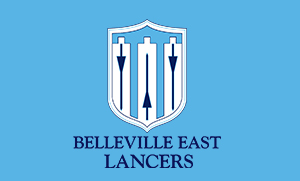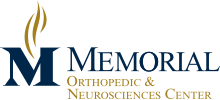Athlete Rehabilitation and Physical Therapy
Learn more about athlete rehabilitation and physical therapy at Memorial Hospital.
What types of patients do you typically see?
We see orthopedic injuries in kids from junior high age all the way up through college age. We’ll get everything from a non-traumatic injury to post-surgical injuries or fractures from toe to shoulder.
Do you see patients who are not athletes?
We treat kids from birth on. We do see obviously a larger portion of children in adolescence through their teenage years just because their bodies are changing, growing, and maturing, and the rate at which all that is happening isn’t always necessarily fluid. We see kids who aren’t athletes, just daily pain or pain with growth or an injury that came about. But they’re not necessarily trying to return to sport, they just want to live and not have pain with their normal function so we see that all the time too. Every person, whether they’re an athlete or not, we all have the right to feel good. That’s always our long-term goal is to get them back to feeling like they did before the injury.
How are the patient’s parents involved?
That’s really important because oftentimes the message doesn’t get from all parties through the process. We do try to communicate with the parent as long they’re present and willing. Then, we include the trainer, so they can communicate with the parent as well. There oftentimes are questions about: Can the student participate? Can the athlete play? The coaches get involved as well because not everybody’s on the same page. The school, the trainer, us, and the doctor get together to make sure everybody’s understanding what the athlete’s able to do at that stage, and what they’re not yet able to do.
How do you handle patients who are anxious to get back to normal activity?
That can sometimes be tricky because coaches oftentimes want the athletes back on the field. They need them in that next game or that next competition. Sometimes it’s just not sensible. It’s not good for them overall. They are still kids. Their bodies are still changing and developing, and if you look at the big picture, we want them to be healthy going back to that level of activity instead of only partially healthy, which will set them up potentially for more injury. We do definitely keep a close eye on that. Again, it’s lots of communication and talking with their trainers and their coaches about when they’re truly ready for that high level of competition versus just trying to get them back as fast as they can. Some of these kids have the potential for college scholarships, and while that seems very pressing at the moment, the long-term outcome is much more important. We may spend an extra couple of weeks keeping them out of competition in order to potentially get them to that long-term goal.
Talk about the teamwork involved in physical therapy.
We do have a pretty good network. We converse pretty readily with the trainers. They will call me on a daily basis just to ask about how an athlete’s progressing and where they should be in competition. Then, we also communicate directly with the liaison from the physician who will give us the same information: When are they due into the clinic next? What medications should they be doing? When are they allowed to go to the next step of their protocol? We have a small group, but we are constantly communicating on behalf of the athlete to know what’s safe and what’s not yet appropriate.
Do you have a patient you have helped who stands out in your mind?
I can recall one who came to me in high school for an ACL reconstruction. He worked his tail off and did so great he went to college. He did great and played football. Now, he’s a working adult and had another surgery. He came right back to us at a different phase of his life with different expectations for his outcomes. But he remembered the care and outcomes he had and that he was happy with it. So, he made it full circle back to us as an adult.


